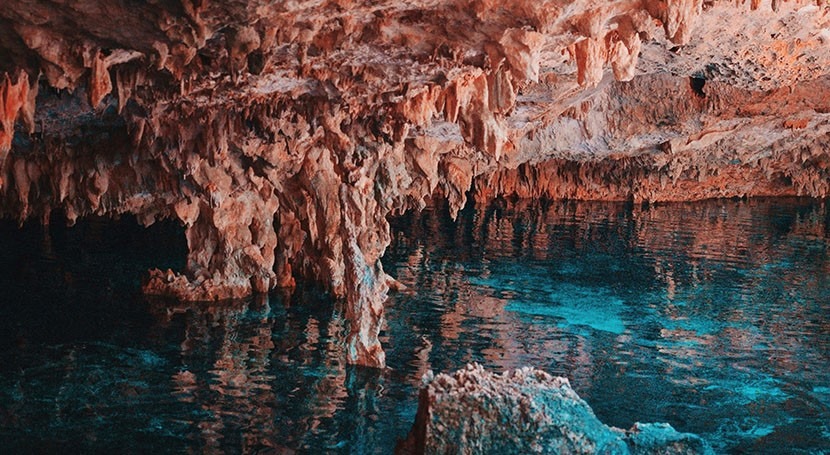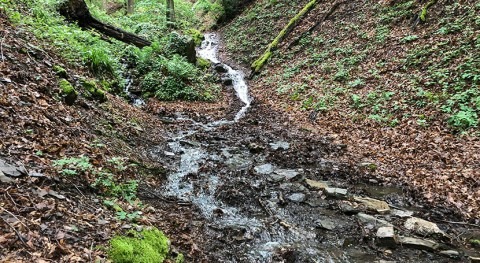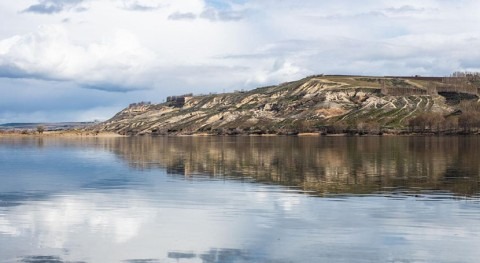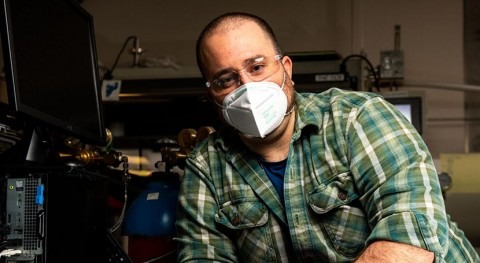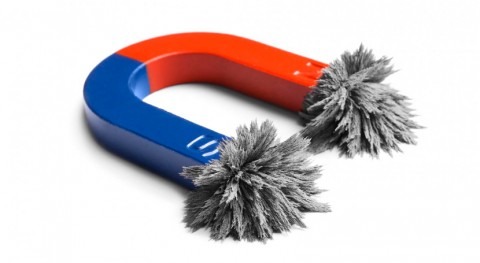Researchers at Pacific Northwest National Laboratory (PNNL) are contributing science and technology solutions to remove or decrease the mobility of contaminants in the subsurface for future protection of groundwater.
Mechanical Engineer Xiaoliang "Bryan" He, Lab Fellow Nik Qafoku, and Earth Scientist Mark Rockhold led a multidisciplinary study—including laboratory experiments and numerical modeling—to test ferrihydrite as a remediation strategy for radioiodine contamination. Ferrihydrite is a nano mineral found in soils and subsurface sediments with high affinity for different contaminants.
The research was featured on the cover of ACS Earth and Space Chemistry.
"Having our research featured on the cover ... is exciting because it gives us an opportunity to share the latest research about potential new treatment technology with the environmental remediation community," said He. "What we're trying to do with ferrihydrite is get more of the contamination removed from the aqueous phase and onto the sediments."
The research indicated that ferrihydrite, when added to the sediment as a remedial agent, significantly enhanced sorption of iodate
When contaminants are moving and passing through subsurface sediments, some of the aqueous species attach to the surfaces of minerals. The research indicated that ferrihydrite, when added to the sediment as a remedial agent, significantly enhanced sorption of iodate. Sorbing the iodate onto the sediments has the effect of decreasing its mobility and results in lower future or eventual contaminant concentrations in groundwater.
Qafoku said, "Ferrihydrite actually decreases the concentration of contamination in the liquid phase, meaning that the level of contaminant radioiodine that remains in the liquid phase is no longer harmful to humans and microorganisms, or to organisms that use the water."
Research from the journal is part of a larger effort to identify technologies for remediation of subsurface contaminants of concern at a complex site. PNNL Earth scientists Yilin Fang and Amanda Lawter, Deep Vadose Zone Program Manager Rob Mackley, and Vicky Freedman from Sealaska Technical Services are co-authors of the publication.
"This is important work, and we're glad to help bring possible solutions to an issue right here in our community," said Qafoku. "In addition, we'll share these findings with scientists and decision makers at other Department of Energy sites and other locations impacted by iodine contamination through PNNL's Center for Remediation of Complex Sites—RemPlex—which was created to engage the remediation research community nationally and internationally."


